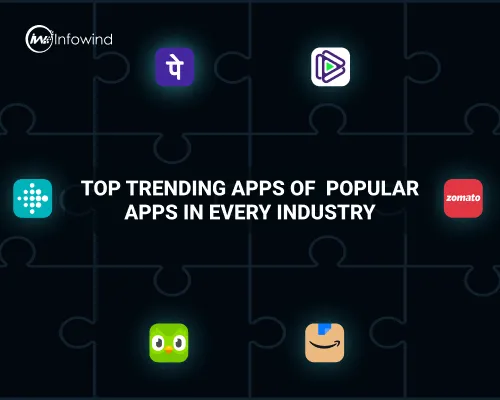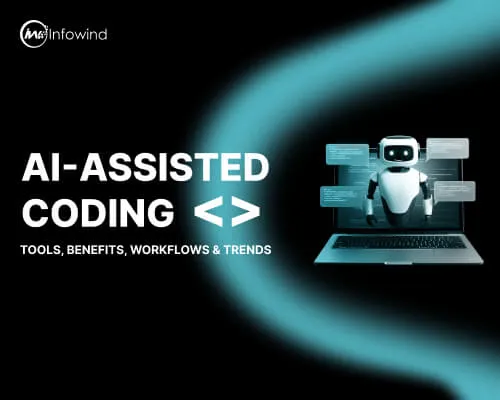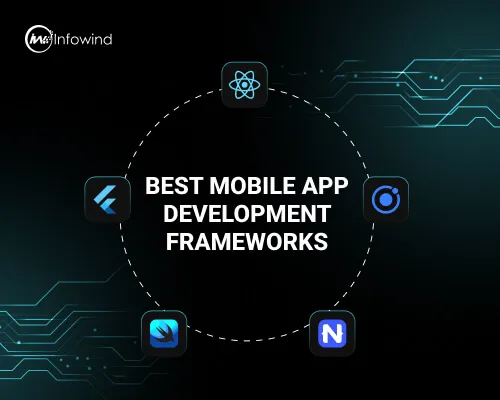The fast-growing nature of sports means that manual management of tennis tournaments will soon be obsolete. Taking care of player sign-ups, changing the brackets, or planning game schedules with paper or spreadsheets is no longer practical. Grand View Research predicts that by 2030, the global sports technology market will reach $55.14 billion, primarily driven by technological advancements in event management.
Using tennis tournament software has brought us to this point, making processes smooth, minimizing mistakes, and keeping players, organizers, and fans updated in real time. Think about organizing an entire tournament using just one dashboard, where you have automated scheduling, live score draws online, and instant chats.
If organizers deal with many sudden changes, wrong bookings, or jumbled brackets, they find relief with the efficient and correct scheduling of today’s tournament platforms. The result? Tournaments that roll smoothly, happier players, and a more professional environment for your brand.
Evolution in retail isn’t planned for the distant future; it is underway now. On top of all that, our marketing is now done digitally.
What is Tennis Tournament Software and How Does It Work?
Tennis Tournament Software allows event leaders to organize and handle a tennis tournament step by step. Rather than working with papers, spreadsheets, or lots of emails, the software lets you manage it all easily from one spot. The process is made simple, regardless of whether you’re having a club event or a big tournament, with this software.
Tennis Tournament Software mainly supports businesses by carrying out important functions like:
- Registration for players is available quickly and safely on the internet.
- Brackets are automatically generated by the software based on the tournament seedings of the participants.
- Organizers can decide when and on which court, and then notify players of games instantly.
- You will receive updates while the game or match is ongoing, helping players, coaches, and fans know what’s going on.
- See the latest stats on your games and matches as soon as they happen.
With Tennis Tournament Software, things become clearer and easier. You won’t be unsure about the schedule, there are no overlapping reservations for courts, and all the scores are safely kept. Each person involved can look at updated data with a simple click.
It also helps to increase the number of fans involved. Thanks to these services, fans can follow the game live, check the results, and receive updates when a game starts or ends.
Tennis Tournament Software makes it much simpler to coordinate and manage tournaments. The system saves people time, lowers the chances of errors, and helps everything run more smoothly at the event. If you’re organizing a tiny event over a weekend or a big national competition, this software can be very useful.
Why Choose Custom Tennis Tournament Software Over Off-the-Shelf Solutions?
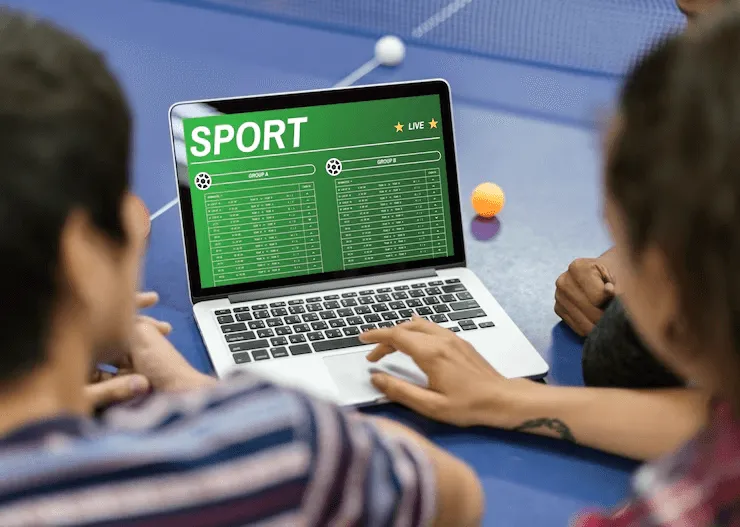
A lot of people rely on ready-made tennis tournament software to organize a tournament. Even though these built-in tools aid in simple needs, they tend not to work well as the tournament gets bigger or more complex. Here is when custom software for Tennis Tournaments brings major improvements.
These solutions are made without the ability to customize their features. There’s a chance you’ll struggle to adjust your lesson plans to fit the requirements of the tournament instead of adjusting the rules to benefit your players. As a result, you may not be able to change the user interface, add missing features, or work with tools currently used by clubs, which can often be done only with added effort and expenses.
Alternatively, custom Tennis Tournament Software is shaped to meet your particular needs. You handle every aspect of the UI, configuration, workflow, and how it grows. You can get bilingual features, one-of-a-kind brackets, or software that integrates with payment systems or apps, all with custom software.
Thanks to its flexibility, you can use it at many events like:
- Typically, youth tournaments require parents to control what their children do, sign consent forms, and handle scheduling and other things that can all be automated with custom software.
- Events using the ATP model should record every player’s stats, introduce ranking systems, include brands from sponsors, and integrate all types of media.
- Community leagues get support from integrated clubs, active community forums, and instant communication tools.
Custom software is also valuable because it can be scaled quickly. As your event gets bigger, your platform can grow too, and you won’t have to pay excessive fees.
For tournaments today, providing a smooth player journey can make yours stand out from the rest. Custom Tennis Tournament Software is perfect for your present activities and also helps as you grow. It helps your site work better, supports your branding, and lasts into the future.
Must-Have Features in a Tennis Tournament Software Solution
Make sure the software you pick makes event management easier and, at the same time, improves the enjoyment of players, organizers, and people following the tournament. This section provides a list of important aspects found in all modern solutions, complete with real examples to demonstrate their usefulness.
Player Registration & Profiles
Giving players a chance to sign up on the website is important. The process shouldn’t be complicated for users to register, provide necessary documents, pick their areas of interest, and design their profiles. Users can find records of past wins, ranks, and previous game results in profiles.
For youth tournaments, allowing guardians to approve, confirming age, and including a school affiliation automatically replaces what once was a tedious process.
Bracket Generator (Single Elimination, Round Robin, etc.)
With a dynamic bracket generator, those organizing events can choose single, double elimination, round-robin, or make their own tournament format. Sorting players by their rank or by chance saves lots of time over having to do it yourself manually.
Using the bracket tool, community clubs can prepare Sunday league schedules without mistakes and with fairness.
Match Scheduling & Notifications
With smart apps, you can fill the schedule for teams and courts, and it will ensure everyone has the time needed to rest. Adding notifications to your app means no one ever misses the time or location of their next game.
During multi-day events, this function stops people from booking twice and missing appointments, as everyone stays informed straight away.
Real-Time Scoring & Live Updates
The action is real and vivid when it is live-scored. All fans in the arena, on-site, and those watching remotely can track matches shot by shot. Instead of waiting for the official results, parents can instantly find the scores of the match on the app.
For major events in the ATP tour, this function allows fans and journalists to stay updated with what’s happening live and on time.
Admin Panel & Role-Based Access
Managing every aspect of the tournament is possible due to robust backend controls. Through role-based access, organizers can define the specific permissions available to referees, scorers, and volunteers.
In large tournaments, making different logins for volunteers at check-ins and those at the scoreboard stops them from confusing each other.
Integration with Payment Gateways
It is simpler to accept registration fees, money for merchandise, or donations when you have Stripe or PayPal as your integrated payment processor. You can bank easily and safely with it.
For instance, local clubs can take care of their money while organizing events and tournaments in the same place with speed, safety, and order.
Mobile App or Web Portal
A mobile app or website that adjusts to any screen allows users to get schedules, results, and updates on their devices. This makes it easier for users to play and helps everyone join the tournaments.
During playoffs, players only need their phones to see match timing and venue addresses, removing the need to print anything.
Analytics & Reports
Thanks to data, organizers can inspect how well the tournament did, monitor participation, and prepare better for future events. Overview charts in the dashboard help you check results easily, while detailed records are available for download.
Benefit: Organizers can find out which games had the strongest viewership, which areas of the sports venue were the slowest, and where to focus their changes.
A great Tennis Tournament Software package brings these fundamentals together, making all involved feel more organized and efficient.
Tech Stack Behind Robust Tennis Tournament Software
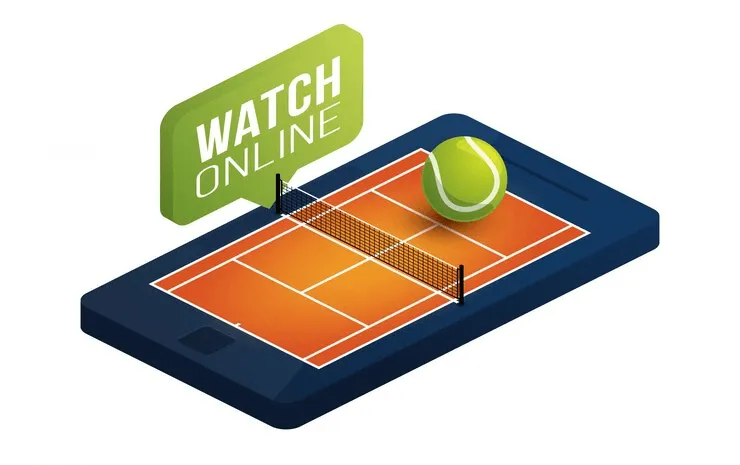
Selecting the best software from every part of the system is important for making Tennis Tournament Software powerful and scalable. Building the online platform with the right tech stack guarantees it is fast, dependable, safe, and can take care of live match details and player subscriptions.
Frontend Technologies
Many developers pick React.js for making web interfaces and Flutter for mobile apps. React allows fast, convenient use of the software, so fans and event organizers both have a responsive time when they use it in browsers. For mobile platforms, Flutter saves time by allowing one codebase to run software that is compatible with both iOS and Android.
Backend Technologies
Thanks to its handling of many requests, choosing Node.js on the server is a smart pick for live events, drawing many users online together. Django is an example of a Python backend, while Laravel is built in PHP and can be expanded as needed.
Real-Time Features
Staying up to date with the latest news during live sports is very important. It is common to use WebSocket or Firebase Realtime Database to keep scores, brackets, and chatting updated live without refreshing any page. An update to the match score on a stream is visible to everyone, with no need to refresh the page.
Cloud Infrastructure
You can use AWS, Microsoft Azure, or Google Firebase to ensure your application is safe and can handle a growing user base. Startups will benefit a lot from Firebase by getting everything they need for authentication, databases, and notification features instantly. Advanced load balancing, serverless functions, and custom call processes are reasons why some larger tournaments use AWS.
Database Choices
PostgreSQL is great for saving structured data such as player profiles, what matches have happened, and schedules because of its dependability and support for difficult queries. For needs related to storing evolving or unstructured data (like chat messages or app configurations), MongoDB fits the bill.
Keeping every user happy is just as important in tech stack selection as considering how performance can be improved.
Step-by-Step Guide to Developing Tennis Tournament Software
You should use a strict approach based on the Software Development Life Cycle (SDLC) when creating strong Tennis Tournament Software. I’ll break down the main steps in developing a strong tournament management platform, illustrating them using tennis examples.
1. Discovery & Requirement Gathering
Understanding the main goals of the tournament software should be the first thing to do. Is the competition part of a club near you, a tournament in your school, or even a nationwide event? Those in charge (for example, tournament directors and coaches) express their own needs: quick registration, live reporting of scores, control over brackets, and many additional functions.
For example, families in a junior tennis league might ask for parent access control, but professional tennis tournaments may require ranking by age groups.
2. UI/UX Design
Once the design scope is set, designers go on to design wireframes and mockups that are easy to use. The main goal is for the website and app to offer a comfortable experience to all users. Screens in the app include registration forms, match schedules, live updates, and admin dashboards.
For example, a simple interface that allows users to check either live information or past scores for a match increases how much fans enjoy the website.
3. MVP Development (Minimum Viable Product)
At this point, developers handle the main tasks: helping users register, plan events, make brackets, and track initial scores. Thanks to the MVP, organizers can make use of the platform and recommend updates ahead of launch.
An example is when a regional tennis club tries out an MVP over the weekend to keep track of scores and player arrivals in real time.
4. Feature Iteration
With feedback and data from users, new features are installed, including push alerts, match reports, online payments, and graphical mobile app support. Software reaches this stage to match the user’s real-life needs.
After MVP, a youth tournament may want parents to receive SMS updates on upcoming matches and confirmation emails automatically sent to their email address.
5. Testing (Manual + Automated)
Developers use both manual methods and software to test that the application will run well. Among these are moving data from existing tests, managing matchup times, and ensuring the game is supported on different types of devices.
In this case, automation ensures that no two players are booked twice, as testers enact real game situations manually.
6. Launch & Maintenance
When all the issues are resolved, the platform goes live. Support continues by tracking performance, fixing bugs, and making additional updates to the program’s growth.
After release, the software helps out at community events, and developers update it after each tournament to make the application more useful and faster.
If organizers choose this development cycle, they receive a trustworthy, scaled, and user-friendly solution for their tennis tournament.
How Much Does It Cost to Develop Tennis Tournament Software?

A frequent question heard from both tournament organizers and sports tech startups is: “How much is involved in developing Tennis Tournament Software?” The choice is affected by things such as the feature set, used technology, approach to development, and where the team is located.
Key Factors That Influence Cost
Features & Complexity
Setting up a site for tournaments with basic functions is much less expensive than including advanced features such as analytics, mobile apps, and third-party integration.
Platform Choice
- Doing forgotten passwords only on the web will save you money compared to handling both web and mobile access.
- By developing with Flutter, you can save costs since you don’t have to build different apps for iOS and Android.
Developer Location
- Developers in these parts of the world usually cost between $100 and $150 per hour.
- For the same reason, you can hire offshore developers in India, Eastern Europe, or Southeast Asia at rates ranging from $25 to $60.
Estimated Development Cost Breakdown
MVP (Minimum Viable Product)
Registration options, bracket management capabilities, and scheduling availability
The project is expected to cost between $10,000 and $25,000.
Mid-Level Platform
The system comes with real-time scores, mobile device support, an admin panel, and simple analytics.
It will generally cost between $30,000 and $60,000 for this surgery.
Enterprise-Level Software
Extra features include streaming, complex analysis, functionality for many user roles, payment gateways, and full website customization.
You should expect to spend between $70,000 and $150,000 or more on the project.
In-House vs. Outsourcing Development
In-House Development
Full control and simple teamwork are available, but the cost increases, mainly if the development process demands hiring designers, developers, QA, and a product manager.
Outsourcing
Manufacturing is now more manageable and simpler to grow. Hiring experts or freelancers in sports software often won’t increase the price and can help you build products faster and more cheaply in the early stages.
Sometimes, using a hybrid model in which external teams build while the company maintains ownership is a good way to balance results and authority.
Overall, the cost of developing Tennis Tournament Software tends to differ greatly from project to project. Clear aims and selecting the right team will ensure that your budget is met and the technology can grow as your tournament grows.
Security & Compliance in Tennis Tournament Software
Security and compliance must be strong in every aspect of managing sensitive data because it isn’t an optional concern. No matter if it’s a youth program or a national event, Tennis Tournament Software is needed to keep player data secure, ensure safe payments, and encourage equal treatment.
1. GDPR & Data Protection
Any tournaments involving users from the EU or hosted within the EU must comply with the General Data Protection Regulation (GDPR). This means just gathering the necessary data about players, receiving agreement from them, and permitting users to view or remove their information as needed.
A player profile would normally have the person’s name, contact data, medical records, and their historical rank, and everything must be preserved safely and securely. With HTTPS protocols, multi-factor logging in for admins, and safe encryption, user information is protected, and the website can avoid penalties.
2. Secure Payment Transactions
All registration fees and merchandise sales need to be handled with security in mind. By linking your website to Stripe or PayPal, your customers’ transactions are kept private, checked for authenticity, and tracked for illegal activities.
Use Case: Parents need to know that their card details are secure when they pay for their children’s participation in a tournament, checked by a trusted provider.
3. Fair Play & Transparency
A single-minded focus on fairness is an important goal of the tournament. Only approved individuals are permitted to make updates to match results or brackets with this system. Open bracket creation, ongoing updates during matches, and saved logs support a fair environment and limit arguments.
In important competitions, a reliable history depends on both the audit logs and saved digital match results, which can be used for ranking and managing issues.
Put simply, today’s tournament software needs to have more than just functions. The data of users must be protected, legal rules must be followed, and fair competition encourages an ongoing reputation for everyone involved.
Common Challenges in Tennis Tournament Software Development

Building effective Tennis Tournament Software requires a great deal of effort. Having the right tools for event management can make things easier, though managing them may bring up many operational and technical problems. This table outlines the most common challenges and how to overcome them.
1. Real-Time Updates and Latency Issues
Being able to follow the action live is a leading expectation in sports software nowadays. However, transferring new changes to every user and device at the same time may not be easy if there is bad internet or if many users are using the system at one time.
One way to fix this is to use WebSocket or Firebase Realtime Database so that updates appear instantly on everyone’s screens. There, everyone using Firebase could see results live on their mobile devices, as the scores were updated in real-time, delighting coaches, parents, and fans.
2. Scheduling Conflicts and Automated Resolutions
At tennis events, different courts, periods, and types of players are usually used. When athletes have two matches too close together, it can upset the schedule and ruin the event.
Solution: Use systems that take into account when a worker is available, the needed match duration, and their recovery schedule. One tournament coordinator used auto-conflict detection and planning, so the system flagged schedule clashes and offered fixed solutions, saving much of the organizer’s time.
3. Handling High Traffic During Peak Matches
When heavy traffic rises during big events, servers are not able to cope, resulting in poor response or stoppages, including for those accessing information online during matches.
A good solution is to use AWS or Google Cloud to host your Tennis Tournament Software. Automate the expansion of your server resources and add a CDN to help disseminate traffic. Over 10,000 people watched a university championship at the same time; AWS Auto Scaling maintained a smooth service.
Bonus Challenge: User Onboarding
If users have a hard time understanding a well-built software, it can still go unadopted.
Suggestion: Show introductory guides and emails for new users, and arrange the design so it’s easy to understand. Adding a 2-minute video to sign up increased adoption of the service by 40 percent.
Solving these obstacles helps a business run smoothly and also develops trust between the company and its users. If you plan for the usual roadblocks, your Tennis Tournament Software will be recognized for dependability and ability to handle any number of matches.
Real-World Use Cases of Tennis Tournament Software
It is with these real tournaments that Tennis Tournament Software truly shows how valuable it is. Let’s take a look at how utilizing this technology is helping organizers make things simpler, improve fan connections, and bolster their image.
1. Local Youth Leagues – Seamless Scheduling and Parental Access
A tennis academy in Florida uses a special program to handle the management of its regular youth tournaments. Before that, using papers to register, selecting brackets by hand, and calling to arrange games led to mistakes and postponed games.
Going digital allowed the club to work less on administration by 65%, and most parents (over 80%) said they preferred to receive match updates and live scoring from the mobile app. Stayuya stood out by allowing fans to review current brackets and outcomes live.
2. College Tennis Championships – Handling High Traffic and Real-Time Scores
It is used in California at a university level, where they use the web to deal with player brackets, court assignments, and up-to-date scores. Powered by AWS and WebSocket connections, the software handled over 500 athletes and a huge crowd of online spectators throughout the event.
The organizers reported a 40% rise in digital activity this year, and coaches found the data exports useful for assessing their players.
3. ATP-Style Community Tournaments – Multi-Round Brackets and Role Management
The city league wanted advanced systems such as playing teams against each other, automatic seeding, and the ability for both scorers and referees to use the software. Because of the custom and unique solution, everyone had just the access needed for their role, and Stripe made collecting fees easy with high levels of security.
The head of the tournament explained:
“There were huge improvements after we switched from spreadsheets to smart scheduling software,” she said.
Comparison of Leading Tools
| Feature | Challonge | Tournament Software Pro | Custom Solution |
| Real-Time Scoring | No | Yes | Yes |
| Bracket Flexibility | Basic | Moderate | Advanced (Customizable) |
| Role-Based Admin Access | No | Yes | Yes |
| Mobile App Support | No | Yes | Yes |
| Payment Integration | No | Yes | Yes |
Using Tennis Tournament Software in practice proves it can lessen errors, increase user happiness, and meet the needs that arise with more tournaments, which ultimately makes events smoother.
Conclusion
New features offered by Tennis Tournament Software are bringing about major changes in tournament organization and experience. It now makes the process clearer, simpler, and more scalable, whereas before, errors were common.
For you to realize these benefits, it is important to have the right partner for development. If your team has skills in web and mobile development, they can create a custom solution for you.
Want to set up your next tournament as a digital event? Our web development experts focus on making platforms that grow and perform efficiently.
Want to give players and fans a smooth experience on their mobile devices? Our mobile app development services make it easy for anyone to enjoy your tournament on their devices.
Let’s help you turn your dream into a reality that works. Contact our team right now to receive a free quote or consultation about your tournament.




